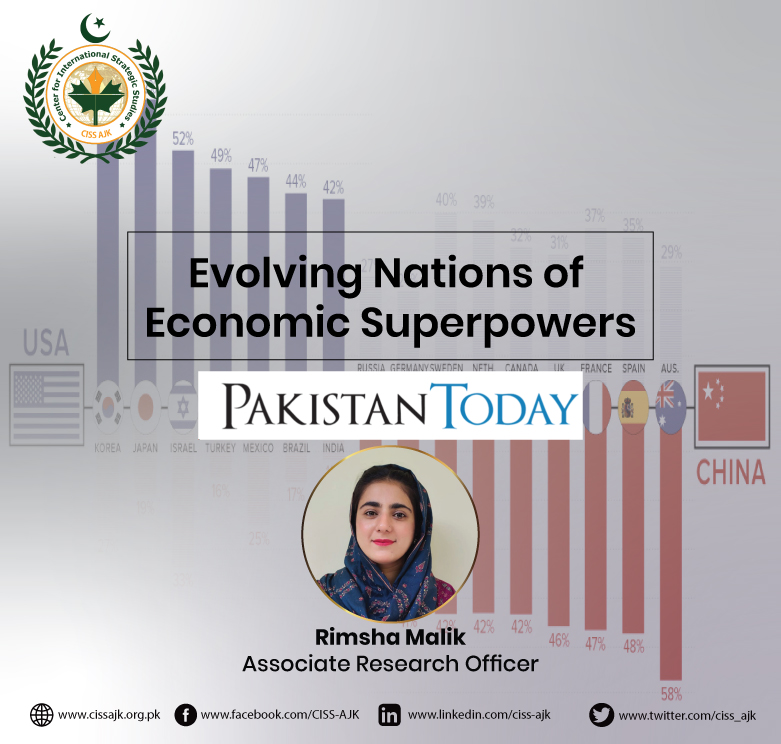650
In the 1970s and 1980s, individuals from various nations sought the “American Dream” in the USA, attracted by the promise of economic opportunity and social mobility. The USA stood as a symbol of prosperity, particularly for those escaping economic hardships and political turbulence in their homelands. Today, the world has witnessed a shift in these trends. Westerners are now establishing startups and embracing the digital nomad lifestyle in regions like Asia and Africa, while citizens of emerging economies are seeking ways to uplift themselves and their communities without leaving their homelands. This transition away from the USA, traditionally viewed as a major economic superpower, prompts a reconsideration of the concept of economic superpowers in the contemporary world and its implications for the global economy.
The G7, a group initially formed to address the challenges of the 1970s recession and oil crisis after the Cold War, focuses on global economic and financial cooperation and maintains an interest in security and conflict prevention. In contrast, the more diverse G20, established in 1999, aims to foster cooperation between the G7 and developing countries.
Historically, membership in the G7 or G8 has represented economic superpower status, but in the post-Cold War era, the landscape of economic superpowers has become more intricate. Russia, for instance, joined the G8 despite not having a fully liberalized economy, reflecting the evolving nature of economic influence.
However, it’s worth noting that once a nation attains membership in these exclusive economic super-clubs, it rarely relinquishes that status. With the exception of Russia’s suspension in 2014, no nation has fallen from the superpower ranks.
This brings us to a contentious point that has garnered much attention in recent years: China’s perceived shift in the context of the USA’s economic and military influence. In recent years, China has transformed from an emerging market to an influential global economy known for technological advancements and extensive infrastructure development. The “Belt and Road Initiative,” initiated in 2013, has allocated substantial funds for global infrastructure projects, fostering increased trade and economic activity and bolstering China’s global influence.In the current dynamic global economic landscape, it is imperative to reassess our understanding of economic superpowers. The traditional criteria of GDP and military might are no longer sufficient to capture the multifaceted nature of today’s economic realities. We must transition to a more inclusive and nuanced perspective that encompasses a broader range of factors, including literacy rates, life expectancy, healthcare accessibility, and human capital development.
Nonetheless, despite these signs of progress and growth, discussions about the sustainability of China’s influence, particularly in terms of economic competence, remain ongoing.
Conversely, the USA maintains its position as one of the prominent superpowers, even as it faces substantial domestic challenges, including income inequality, a shrinking middle class, and a polarized political system. Notably, the USA invests heavily in its military, yet it faces increasing scrutiny regarding its role as a global superpower.
These challenges raise questions about the sustainability of the USA.’s superpower status. In fact, some argue that it is more pertinent to question whether China’s supposed shift will occur before any potential change in the US role.
The traditional division between emerging and developed economies is becoming less relevant. Many emerging economies are now growing faster than developed ones, making significant strides in poverty reduction and education. For instance, China has risen to become one of the world’s largest economies, with impressive progress in literacy and infrastructure. In contrast, the USA faces challenges such as healthcare costs and infrastructure.
As countries like South Korea, Brazil, and Indonesia exhibit their own strengths and innovations, it becomes evident that a more inclusive approach to global economic governance is needed. A shift to regional groupings, similar to the Association of Southeast Asian Nations (ASEAN), can foster economic and technological collaboration, offering fairer economic comparisons.
In the 21st century, there is no need for a single economic superpower to dominate the global economy. By reevaluating global economic governance, a more equitable system can be established, where all nations have a voice and the opportunity to shape the global economy. Traditional measures like GDP and military spending, while valuable, are no longer sufficient benchmarks for progress. In this evolving landscape, inclusive measures such as literacy rates, life expectancy, and access to healthcare can provide a more accurate representation of a country’s well-being and progress.
In the current dynamic global economic landscape, it is imperative to reassess our understanding of economic superpowers. The traditional criteria of GDP and military might are no longer sufficient to capture the multifaceted nature of today’s economic realities. We must transition to a more inclusive and nuanced perspective that encompasses a broader range of factors, including literacy rates, life expectancy, healthcare accessibility, and human capital development. This shift towards a comprehensive view not only acknowledges the unique strengths and innovations of each nation but also encourages cooperative regional alliances, such as the Association of Southeast Asian Nations (ASEAN), where countries can work together, celebrate diversity, and foster mutual support, ultimately leading to more equitable global economic governance. Embracing this approach is pivotal in shaping a 21st-century economic landscape characterized by inclusivity, equity, and collaborative progress.



